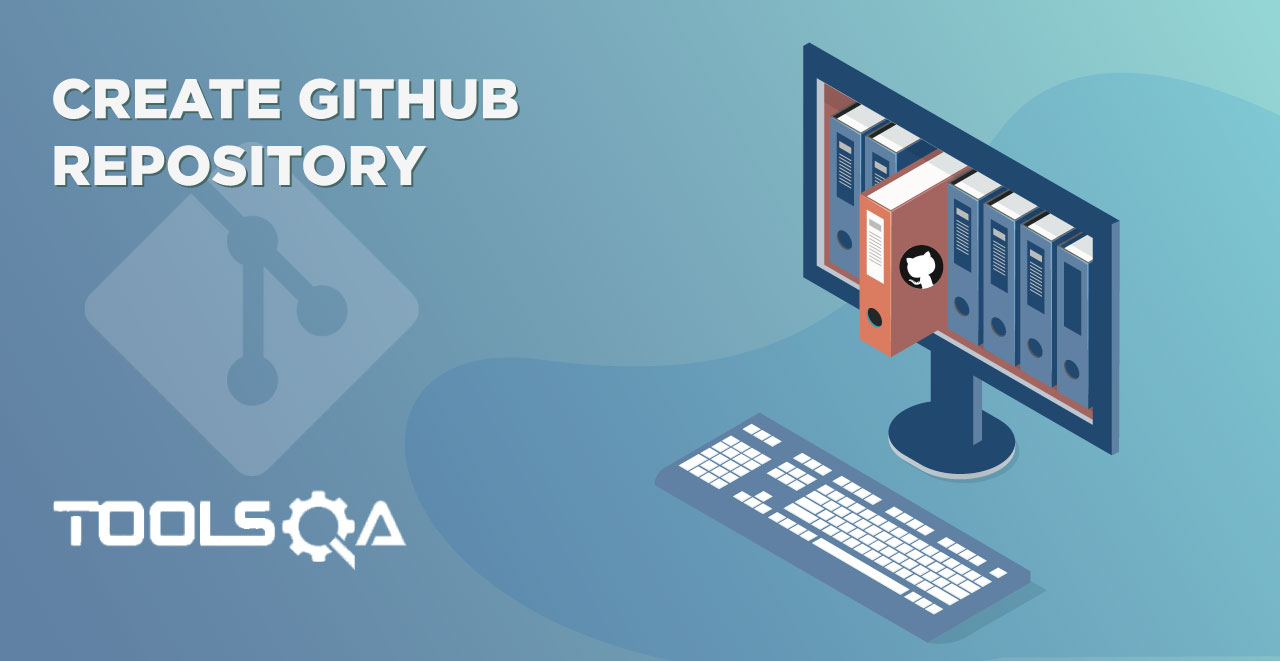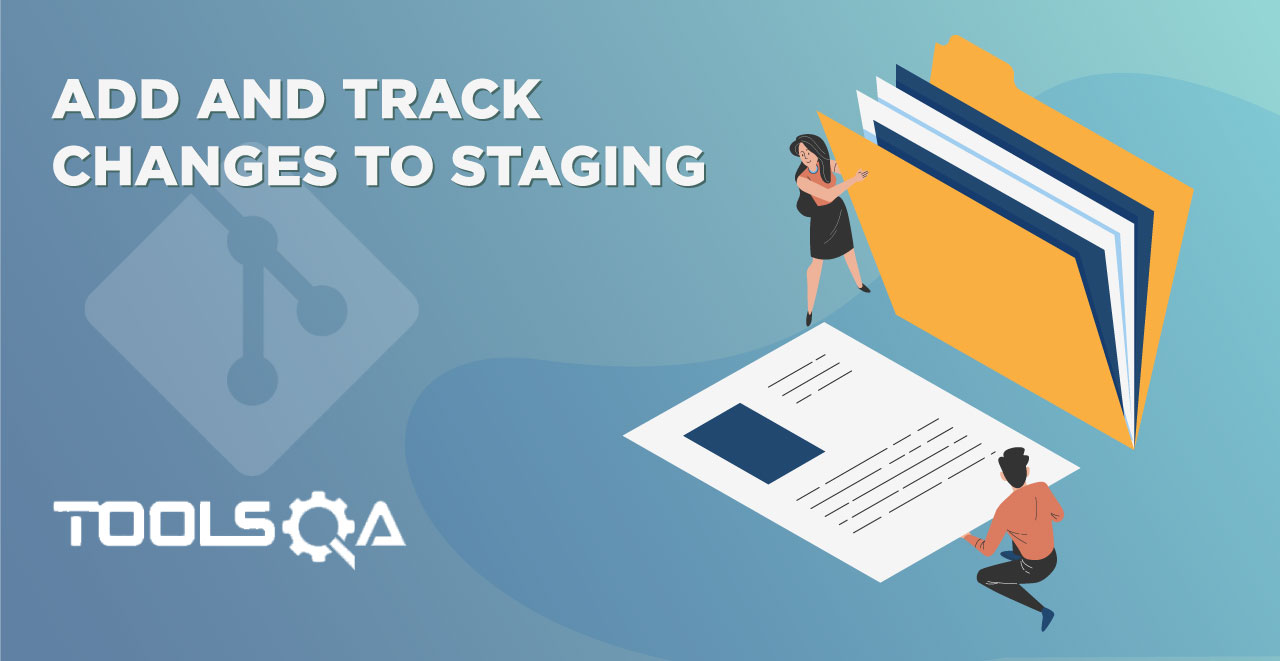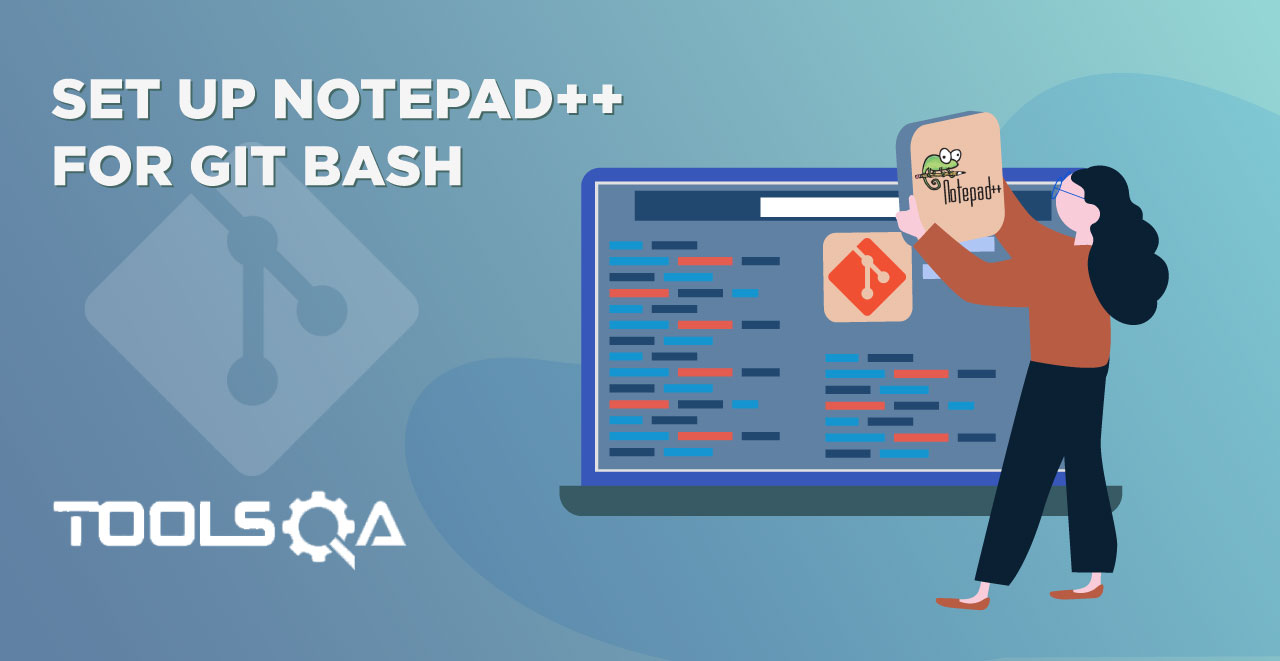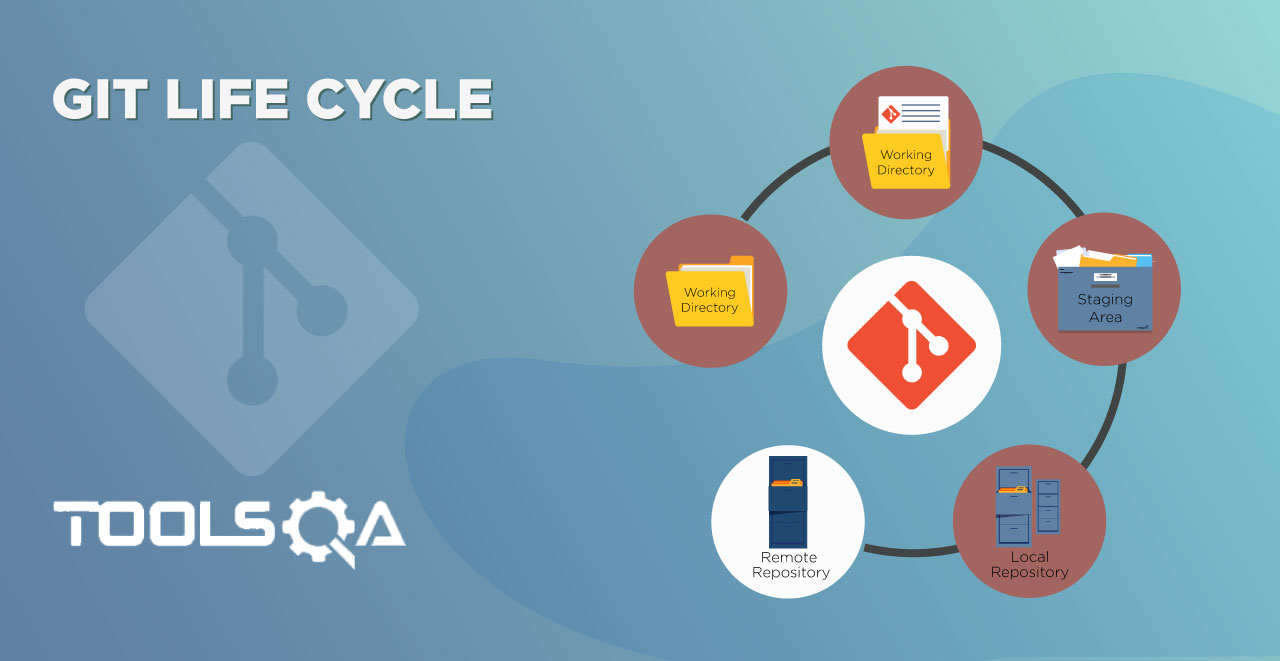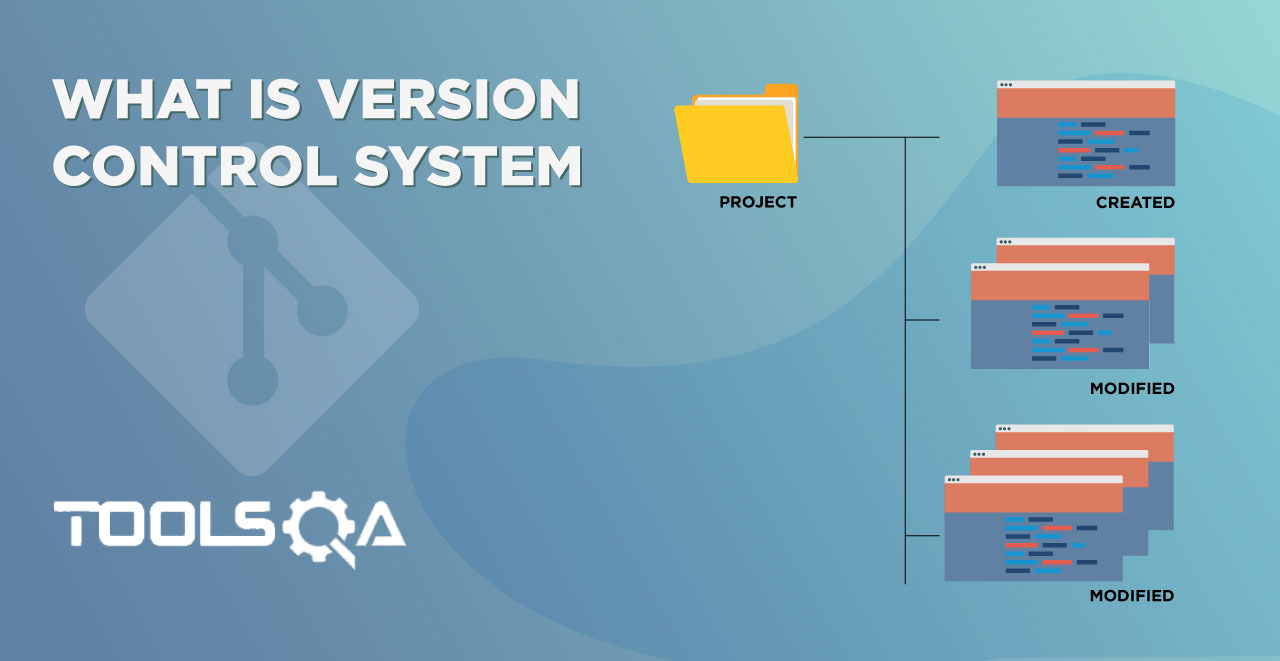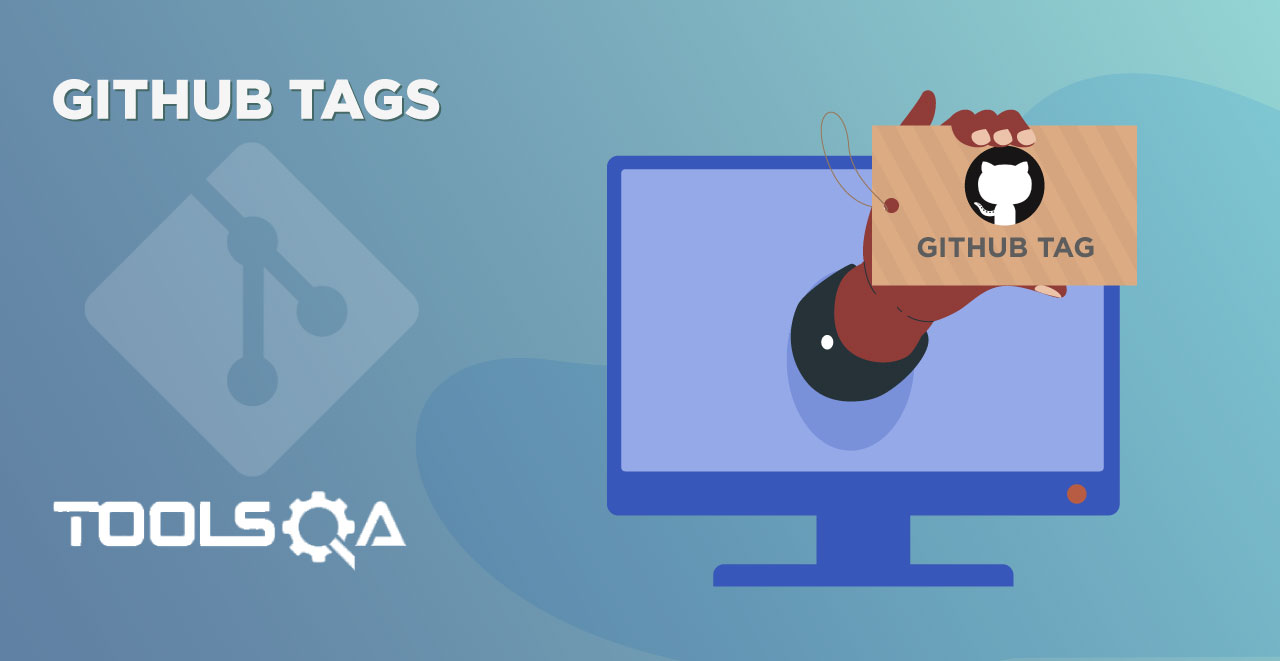GitHub is a web-based centralized system for repositories. It used by millions of people to work on millions of projects. Although it is not a direct part of the Git project, it is very rare that one might escape it. Not only hosting the repositories but many other functions such as issue tracking, code review, etc. can be done on GitHub with GitHub Account.
This chapter is about the first step in contributing to the world where so many collaborations happen in a day. We will learn about creating our account and logging in to GitHub throughout this tutorial.
Setting Up GitHub Account
Setting your GitHub account is easy and very simple. To set the account visit GitHub's official website.
The login form will appear on the same page. Fill out the form with your details to create an account on GitHub.
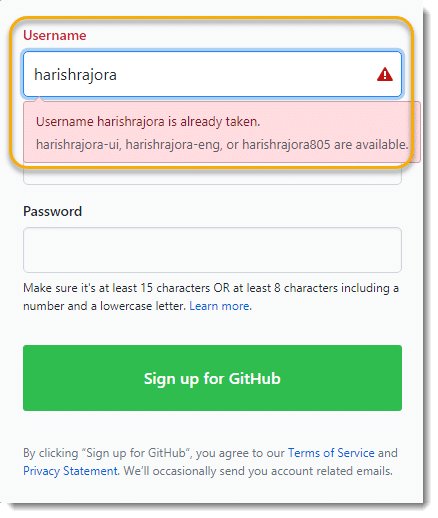
Note: GitHub will warn you if there are any duplicate entries i.e. if that username is already taken by some other individual or not etc. Along with the error, GitHub will suggest you the available attributes also. For example, your username could be duplicate because whatever you are thinking as your username, might have been already taken by someone else.
In GitHub, you will be known by your username. So, it has to be unique. This error can also be seen in the below screenshot. Here, the username harishrajora is already taken by someone else so GitHub is raising the error and suggesting some unique usernames.
Avoid those duplicate entries and fill the form with your details. The green tick will symbolize correct and unique entries.
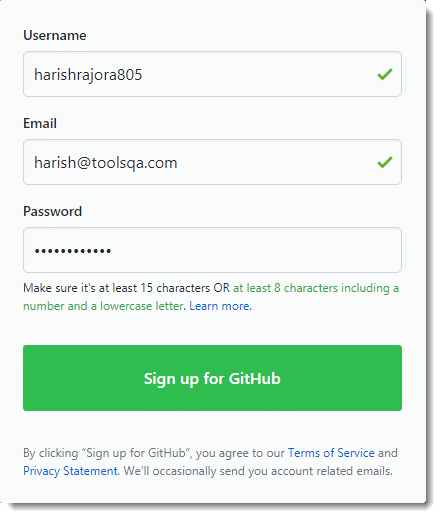
Once you press Sign up for GitHub button, you will be prompted to verify that you are not a robot.
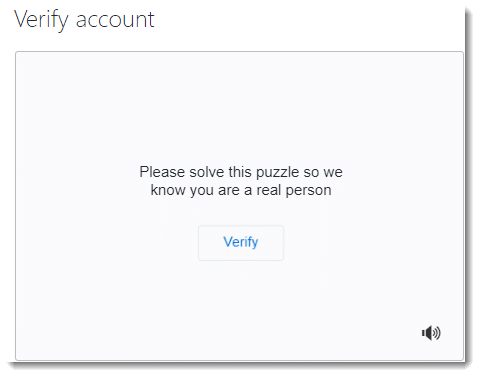
Choosing a GitHub Account Plan
Once you have verified your identity, you can choose the GitHub plan you want to subscribe for.
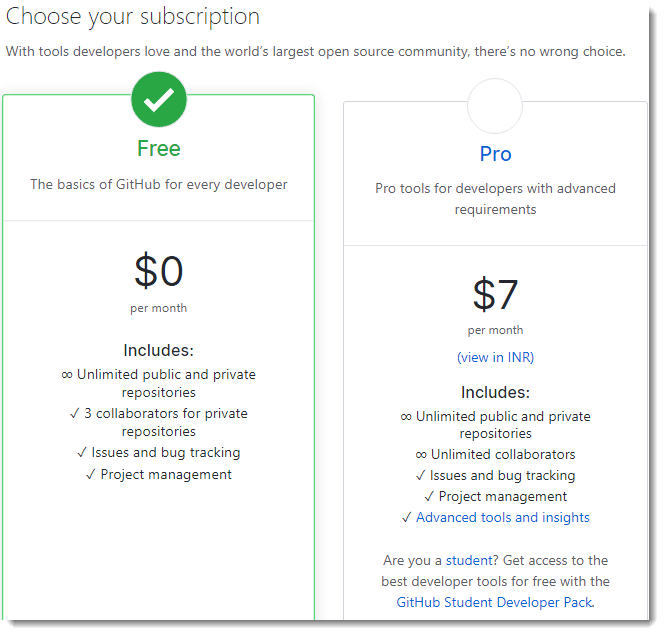
For this tutorial and in general as a beginner, GitHub Free plan is more than enough.
GitHub Pro is for those who would like to have more private repositories and people contributing to these repositories are high in number. These are generally organizations. You also get advanced tools if you choose GitHub Pro such as protected branches or graphs which denotes insights of your repositories like contributors, traffic, commits, etc. You can visit this link to read more about GitHub Pro plan.
Tailoring your experience is a survey that GitHub takes while you create your account. It will be the next step in the process.
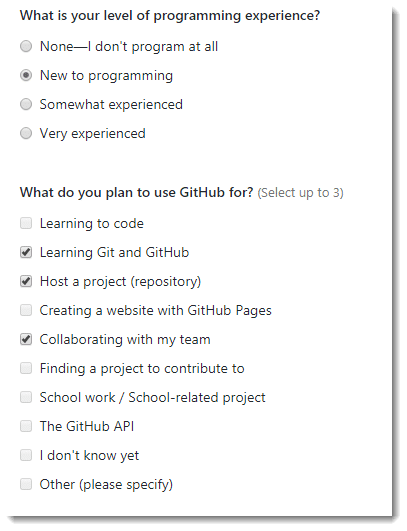 Note: You might or might not get this survey window.
Note: You might or might not get this survey window.
This survey is created to collect data about the users and the reason they have decided to create the account on GitHub. It contains three questions. You can skip this step if you want to.
As the next step, you would be asked to verify your email address. You can verify it by clicking the link GitHub sent you on your email.
GitHub Account Dashboard
Now that the GitHub account is all set up, you can log in through your credentials on the GitHub's website. Logging in will land on the GitHub dashboard which is personalized for everyone according to interests.
A GitHub dashboard will contain three sections.
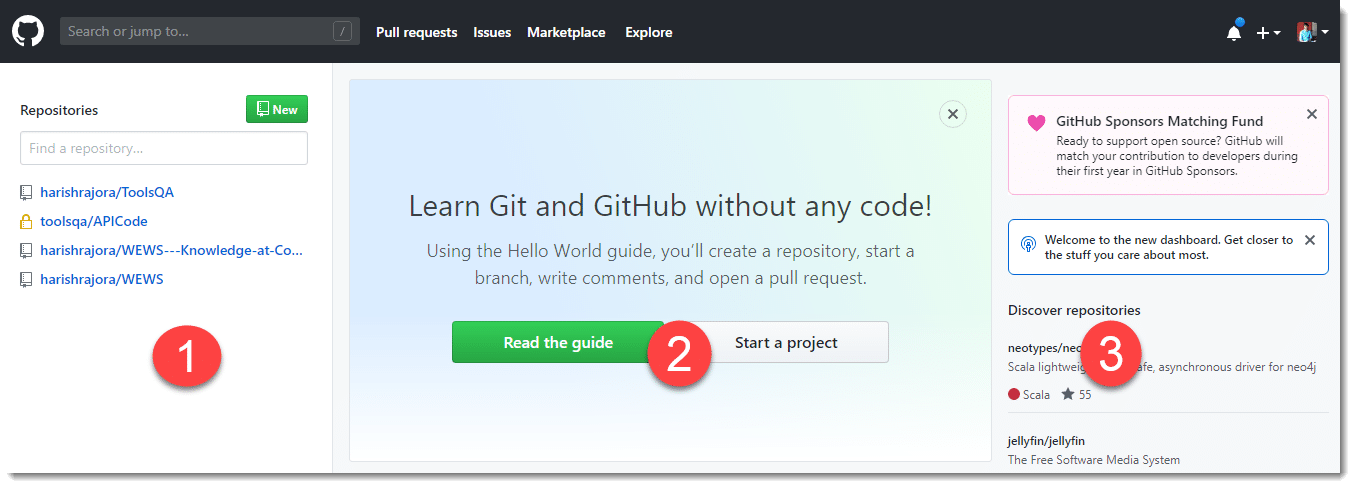
Note: The header section contains important concepts and discussing them here will create complexity. Please ignore the section for now.
- GitHub Repositories
- GitHub Feed
- GitHub Discover Repositories
These are briefed in the below section but these will be discussed in detail in the upcoming tutorials.
GitHub Repositories
GitHub repositories section will contain all the repositories on which the user is working. For ease, one can just toggle between these repositories and start working on them again.
GitHub Feed
GitHub feed contains an individual's feed like other social networks. You can see the recent activities on your repositories and the activities of the people you follow. This feed will contain all private and public repositories activities. Private repositories may include the repositories on which the organization is working or created by the user himself.
GitHub Discover Repositories
This section is newly introduced by GitHub on the dashboard. In this section, a person will be able to see some repositories which match his interests. If you are not working on any repository, you can always explore the repositories through this section and build your reputation on GitHub.
This must be enough for you to start on GitHub. It is the first step so even if you do not understand the interface or how are things listed on the website, don't worry. In the forthcoming tutorials, we will cover these things in detail.
But, since the sign-up on the website is done and you have become a member of the most popular community (with respect to computer science), try to explore GitHub on your own a little bit. Discover some amazing repositories and see some issues raised by the people on your favorite software.

